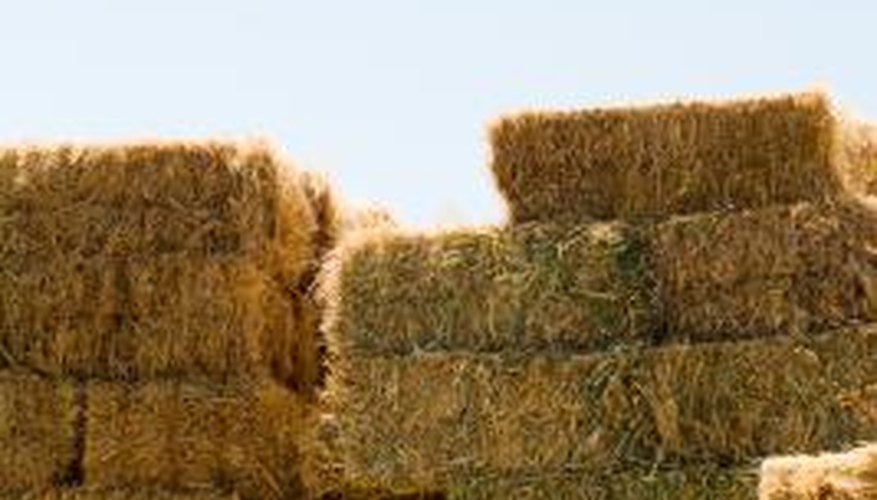When bales of hay have been allowed to get wet, the hay begins to rot and mould. The diminished quality of the hay makes it useless as a livestock feed, but you can get rid of the wet bales in other ways. You can use it for amending soil or give it to a recycling centre. Rotting hay is high in nitrogen and nitrogen feeds the roots of plants. Composting the hay prior to use in your yard can increase its ability to benefit the soil.
Cut the wires or twine holding the hay in its bale form. Use a pair of wire cutters to cut wire and a pocket knife to cut twine. Pull the wires or twine away form the bale, roll them up and throw them into a trash receptacle.
- When bales of hay have been allowed to get wet, the hay begins to rot and mould.
- Pull the wires or twine away form the bale, roll them up and throw them into a trash receptacle.
Break the bale up into manageable pieces or flakes. Pick up the flakes and load them into the bed of a pickup truck. Haul the hay to a plant recycling centre or nursery and donate it for reuse. Some of these facilities may charge you a fee for dumping, but many are happy to take it for free.
Load any wet hay left over into a wheelbarrow and haul it to an area in your yard that you can designate as a compost area. Pile the hay up and let it decompose. Mix it once a week with a pitchfork and keep it moist using a garden hose. Don't soak the hay. Aeration and moistening speed up the decomposition process. Mix the composted hay into the first few inches of garden soil before you plant your garden in the spring.
- Break the bale up into manageable pieces or flakes.
- Load any wet hay left over into a wheelbarrow and haul it to an area in your yard that you can designate as a compost area.
TIP
Wear a pair of leather gloves to keep your hands clean. Wet hay can stain and stink up your hands.
